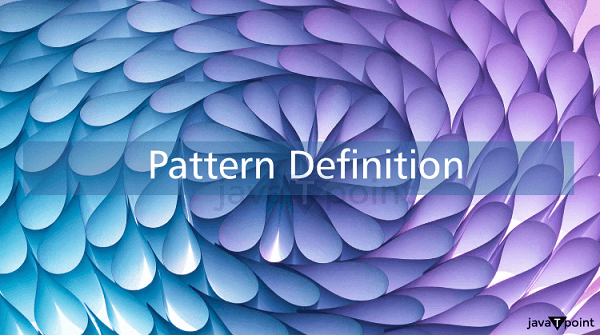Pattern DefinitionIntroductionWhat does the more familiar word "pattern" mean? The pattern has some regularity in ideas, designs, or other artificial or natural methods. Patterns are not always predictable, which means they are not always made using demand, but a good pattern may be unpredictable. The designs may be any abstract ideas or regularity. It is done by repeating minor but abstract elements to form a mesmerizing pattern or make suitable geometric shapes. 
Patterns are observable and recognizable; they need an abstract mindset to understand them better. Patterns also need analysis in science, mathematics, or other language-specific subjects to understand them better. There are many different patterns, but the most chaotic and mesmerizing are the ones which are visually represented and rarely repeating in nature. Spirals meanders, and waves are some of the visually appealing patterns already in nature and some profound examples. Fractals are one of the critical elements of these types of patterns, which repeat themselves at different scales. Mathematics is one subject that is most appealing and trustworthy when we talk about patterns in their study; almost every different topic has some way of connecting with the other one. Once, a famous mathematician said that the output of a mathematical function, such as a square root function, follows a specific pattern for each input. Art and architecture are other types of patterns in visual form, mainly in the form of motifs combined and repeated in various ways to attain an appealing pattern with beautiful colours. Decorative arts are another pattern used as ornamental designs manufactured for decoration. As the name suggests, different colours, when mixed to form appealing and smooth patterns, are not only good looking but also describe the neatness of the home and beautify the wall better. Why is Mathematics called the "Science of patterns"?Mathematics, which has always fascinated most students, is based on patterns of numbers, symbols, etc. We use different ways to symbolize formulas, solve daily life problems, engineering diagrams, architectural designs, etc. So, what do we use mathematics for? Mathematics is primarily used to identify the problem, understand the pattern in the situation, and devise a method to describe the solution. Mathematics is one of the most fascinating subjects based on the fundamental concepts and principles of creating patterns in different fields. The key features of this subject include the precise and rigorous descriptions of phenomena and relationships between various entities. Mathematical equations can also be used in different fields to create physical systems, retain economic models, and even the most biological processes. Scientists and engineers have gained a lot of expertise in understanding complex phenomena. Different fields of engineering, finance, and computer science use mathematics to do their practical work. Using mathematical tools and techniques, engineers design other structures and systems that are safe and efficient. Patterns in computer scienceIn computer science, a pattern refers to a known solution or approach to solving a specific problem or set of problems. Patterns in computer science are used to help simplify and standardize the development of software applications. They can be applied to different areas of software development, including architecture, design, and coding. In computer science, a pattern is a solution or approach to solving a real-world problem or set of issues in computer-related fields to help simplify or standardize the development of software apps or websites. Coders or programmers are employed to solve and curate the problem by fixing and analyzing patterns. Many significant problems, such as :
Next TopicPharmacopoeia Definition
|
 For Videos Join Our Youtube Channel: Join Now
For Videos Join Our Youtube Channel: Join Now
Feedback
- Send your Feedback to [email protected]
Help Others, Please Share










